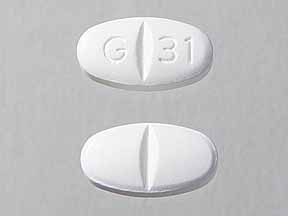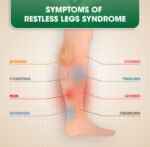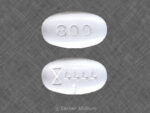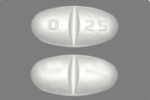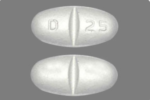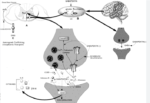Gabapentin is used to help control partial seizures (convulsions) in the treatment of epilepsy. This medicine cannot cure epilepsy and will only work to control seizures for as long as you continue to take it.
Gabapentin is also used to manage a condition called postherpetic neuralgia, which is pain that occurs after shingles.
Gabapentin works in the brain to prevent seizures and relieve pain for certain conditions in the nervous system. It is not used for routine pain caused by minor injuries or arthritis. Gabapentin is an anticonvulsant.
This medicine is available only with your doctor’s prescription.
This product is available in the following dosage forms:
- Capsule
- Tablet
- Tablet, Extended Release, 24 HR
- Solution
- Suspension
Gabapentin, while primarily approved for epilepsy and neuropathic pain, is prescribed off-label for various conditions because of its unique effects on the nervous system.
Off-Label Usages of Gabapentin ?
Gabapentin is frequently prescribed off-label for a variety of conditions outside its primary approvals for epilepsy and nerve pain. Here is a list of some of the common off-label uses:
- Anxiety Disorders: Gabapentin is sometimes used to manage generalized anxiety disorder (GAD) and social anxiety, especially in patients who don’t respond well to traditional anti-anxiety medications.
- Bipolar Disorder: While not a first-line treatment, gabapentin may be used as an adjunct to stabilize mood in patients with bipolar disorder, particularly those who have difficulty tolerating other mood stabilizers.
- Insomnia: Due to its sedative effects, gabapentin is occasionally prescribed to help with sleep disorders, especially for those who struggle with sleep due to chronic pain or anxiety.
- Alcohol Dependence and Withdrawal: Gabapentin is used to help reduce cravings and manage withdrawal symptoms in patients with alcohol use disorder, as it can help alleviate anxiety, tremors, and insomnia associated with withdrawal.
- Migraine Prevention: Gabapentin is sometimes used off-label to prevent migraines, especially in cases where traditional migraine medications are ineffective or not tolerated.
- Hot Flashes: Particularly for postmenopausal women or breast cancer patients, gabapentin can be prescribed to help reduce the frequency and intensity of hot flashes.
- Restless Legs Syndrome (RLS): Gabapentin can help alleviate symptoms of RLS, a condition that causes uncomfortable sensations and an urge to move the legs.
- Pruritus (Chronic Itching): Gabapentin has shown effectiveness in managing severe itching related to conditions like kidney disease, liver disease, or certain types of neuropathy.
- Chronic Cough: Some cases of refractory chronic cough, where traditional treatments are ineffective, have responded to gabapentin.
- Multiple Sclerosis (MS)-Related Symptoms: Gabapentin can help alleviate nerve pain, spasticity, and certain types of tremors associated with MS.
- Temporomandibular Joint (TMJ) Disorders: In cases of chronic TMJ-related pain, gabapentin may be used to reduce discomfort.
- Post-Traumatic Stress Disorder (PTSD): It is sometimes prescribed to help manage PTSD symptoms, particularly anxiety, sleep disturbances, and hyperarousal.
- Vulvodynia: Gabapentin can help reduce pain in patients with vulvodynia, a chronic pain condition affecting the vulvar region.
- Phantom Limb Pain: After amputation, some patients experience pain in the “phantom” limb, and gabapentin may be used to help relieve these sensations.
- Chronic Pelvic Pain: Gabapentin is sometimes prescribed to help manage chronic pelvic pain, especially when associated with nerve involvement.
- Trigeminal Neuralgia: Although more commonly used for postherpetic neuralgia, gabapentin can also help with trigeminal neuralgia, a painful nerve condition affecting the face.
Below is a more detailed exploration of its off-label uses, along with the proposed mechanisms:
1. Anxiety Disorders
- Mechanism: Gabapentin appears to modulate the activity of gamma-aminobutyric acid (GABA), a neurotransmitter that has calming effects in the brain. Although Gabapentin does not bind directly to GABA receptors, it enhances GABAergic neurotransmission and may help reduce excessive neuronal activity, which is often elevated in anxiety disorders. It also reduces the release of excitatory neurotransmitters such as glutamate.
- Effectiveness: It’s used particularly in generalized anxiety disorder (GAD) and social anxiety disorder, though it is not typically a first-line treatment. Gabapentin may be an option when traditional anxiolytics like benzodiazepines or SSRIs are not effective or produce intolerable side effects.
2. Bipolar Disorder
- Mechanism: Gabapentin’s effect on voltage-gated calcium channels (specifically the α2δ subunit) in the brain may help stabilize mood by reducing neuronal hyperexcitability. This mechanism is thought to modulate the excessive neural activity often seen in mood disorders.
- Effectiveness: It’s used off-label as an adjunct therapy in bipolar disorder, especially when patients experience anxiety or have not responded well to traditional mood stabilizers like lithium or valproate. It is not as effective in treating the core symptoms of mania or depression but may provide symptom relief for mood instability and agitation.
3. Insomnia
- Mechanism: Gabapentin’s calming effect, likely related to its modulation of GABAergic neurotransmission and its reduction of nerve excitability, contributes to its sedative properties. It may also improve slow-wave sleep (deep sleep), enhancing sleep quality in individuals suffering from insomnia.
- Effectiveness: Often used when insomnia is associated with chronic pain, anxiety, or conditions like restless leg syndrome. It may help people who have not responded well to traditional hypnotic medications.
4. Migraine Prevention
- Mechanism: Gabapentin is thought to work by stabilizing overactive neuronal circuits and reducing the release of neurotransmitters like glutamate, which are involved in the pathophysiology of migraines. It also modulates calcium channels, which may help in preventing the cortical spreading depression (a wave of neuronal inhibition) that can trigger migraines.
- Effectiveness: Although the use of Gabapentin for migraine prevention is off-label, it may benefit individuals who do not respond well to standard migraine prophylactics like beta-blockers or antiepileptics such as topiramate. Clinical evidence is mixed, but some patients report fewer or less intense migraines.
5. Alcohol and Drug Withdrawal
- Mechanism: Gabapentin’s action on GABAergic transmission helps mitigate the hyperexcitability seen during alcohol withdrawal, which is characterized by symptoms like anxiety, insomnia, tremors, and seizures. It may also reduce cravings for alcohol by modulating dopamine levels.
- Effectiveness: Used off-label to manage acute alcohol withdrawal symptoms and reduce the risk of seizures in people undergoing detoxification. It is sometimes also used in opioid withdrawal, where it can help manage symptoms like anxiety, restlessness, and muscle aches.
6. Restless Leg Syndrome (RLS)
- Mechanism: The drug’s modulation of calcium channels and its ability to influence GABAergic neurotransmission may reduce the abnormal excitability of the nerves responsible for the unpleasant sensations experienced in restless leg syndrome.
- Effectiveness: Gabapentin is often used when standard treatments like dopaminergic agents (e.g., ropinirole) are ineffective or produce intolerable side effects. It can help reduce the urge to move the legs and improve sleep quality in patients with RLS.
7. Fibromyalgia
- Mechanism: Gabapentin likely reduces the central sensitization seen in fibromyalgia, a condition where the nervous system becomes hypersensitive to pain. By inhibiting calcium channels, Gabapentin may decrease the release of excitatory neurotransmitters involved in pain transmission.
- Effectiveness: It has been shown to reduce pain and improve sleep in people with fibromyalgia, although its effectiveness can vary. It’s often prescribed when patients are not responding well to other medications like pregabalin or antidepressants.
8. Hot Flashes
- Mechanism: The exact mechanism by which Gabapentin reduces hot flashes is not fully understood, but it is thought to involve modulation of the hypothalamus, the part of the brain that regulates temperature. Gabapentin may dampen the neuronal activity that triggers hot flashes.
- Effectiveness: It’s often used in postmenopausal women who cannot take hormone replacement therapy (HRT) or in women experiencing hot flashes due to breast cancer treatments. Studies have shown it can reduce both the frequency and severity of hot flashes.
9. Chronic Cough
- Mechanism: Gabapentin may be effective in chronic cough by modulating the abnormal neural reflex pathways that contribute to excessive coughing. This is particularly true when the cough is thought to have a neuropathic origin.
- Effectiveness: For patients with chronic, unexplained cough that doesn’t respond to typical cough suppressants, Gabapentin may provide relief. It is especially useful in coughs associated with nerve hypersensitivity.
Pain Medications, Pain Relief, and Pain Management
